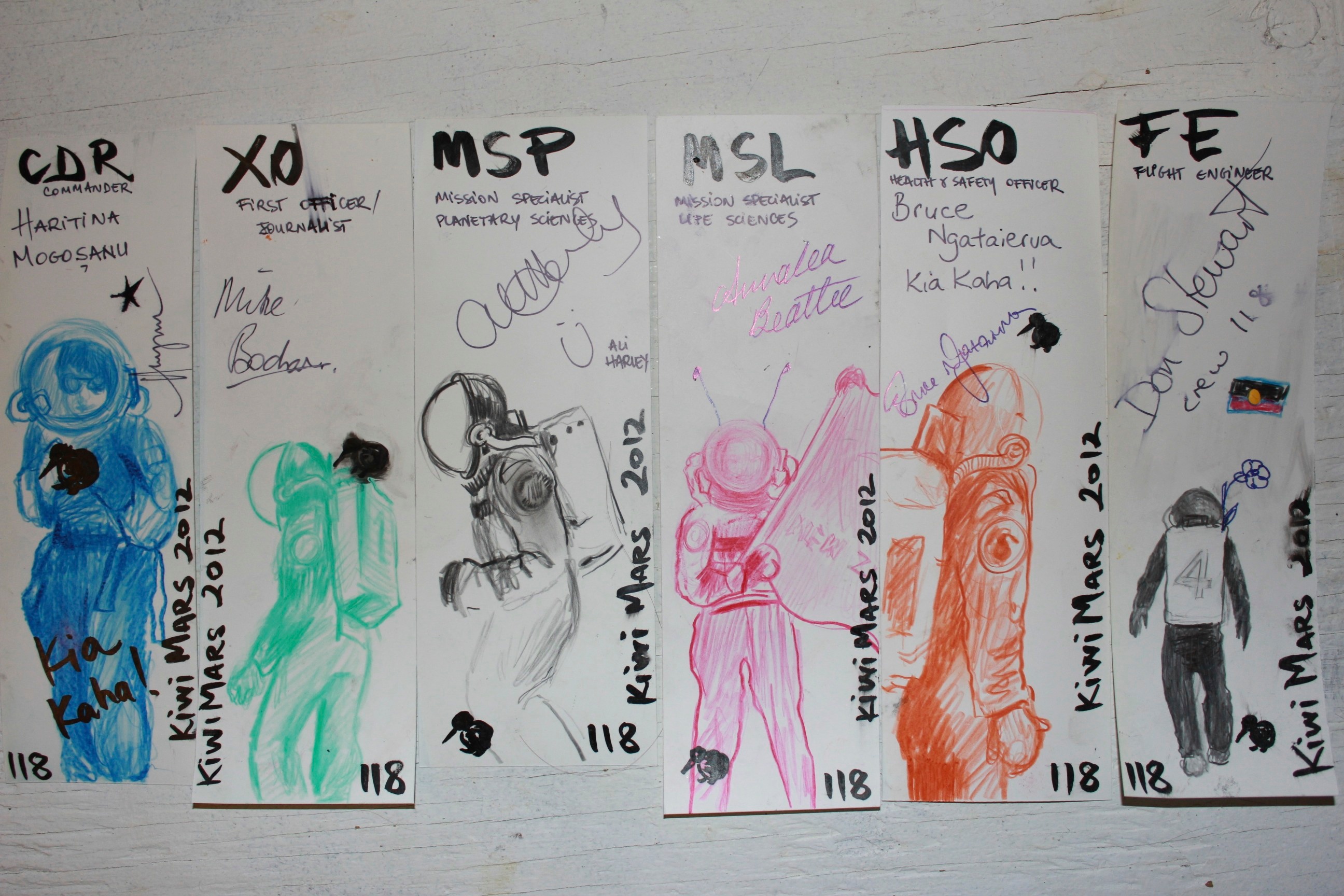By
Annalea Beattie: Mission Specialist Life Sciences KiwiMars 2012
Why IS art important in space? How do we understand its role in a space environment?
In a conversation with journalist Michael Hanlon, astronaut Buzz Aldrin talks about the moon. He claimed that one of the key mistakes made by NASA was that, ''…we never sent anyone who could really communicate what was happening''. Hanlon continues on to write, “As well as engineers and pilots, the moonwalkers should have included writers, a poet perhaps, or an artist among the pilot-jocks. Then, along with the seismographs and geological samples, the analysis of lunar soil and measurements of craters and mountains, we would have heard how the moon smells of gunpowder and tastes of burnt sulphur; of the cold and the terror and we would have heard exactly what it is like to gaze up at Earth, a blue and green orb that from the moon appears four times the size that the moon does from our world." (Hanlon: Moonlit Path to Nowhere, the Age, August, 2012).
Art does help interpret and translate complex experiences of the world but more than that, it can be put to use to help us survive. The daily experience of making art can prompt a sense of freedom, of autonomy and can expand personal space- all these conditions are often lacking in space travel. Free, inner space created by daily imaginative work can be practically used by astronauts to address sensory deprivation and alienation in deep space travel, enabling better adaption to such complex space travel issues as confinement, visual disorientation, weightlessness and motion sickness. So creative thinking can be seen as a survival skill, one that emphasises sensory perception and working with whatever is at hand.
It doesn't really matter what you make:

The members of KiwiMars immortalized
in pencil & in a hurry
by Annalea during our last night at MDRS,
May 2012.
On an alien planet, in an alien landscape, we can imagine using found materials from the environment to decorate ourselves, our dwellings or at the least, make functional form as true artifacts of our experience, modern archaeology or maybe just space junk. |
Whether we examine strategies and techniques for understanding sensation in space travel, build an artist tool kit for space travelers or investigate our precarious and ephemeral position in space with gestures, music or with objects, the art studio can be anywhere you are, even in infinite space… |
Annalea is interested in setting up a blog or making a resource around the idea of an artist tool kit for astronauts. This would be a good design talking point for kids as it helps them imagine some of the challenges and difficulties of confinement and weightlessness. They would have to position themselves as astronauts and design something that could work. Perhaps this could be also run as a competition. |
Annalea's blog - Under Construction